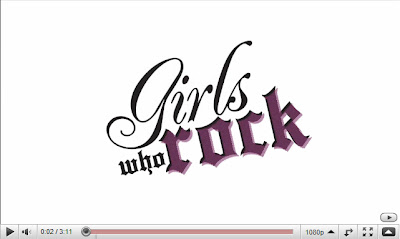
This is a concert reel Frank and I shot and put together for the Girls Who Rock benefit concert in conjunction with She's the First and AfricAid.
"Seven recording artists—Kat DeLuna, Lenka, Shontelle, MoZella, Kelli Pyle, Vita Chambers, and Cara Salimando—with DJ Kalkattua and host Chris Bashinelli, Executive Director of the "Bridge the Gap" web documentary series, entertained a crowd of 400 at Santos Party House in downtown Manhattan.
The event profits sponsored three girls' secondary school education via AfricAid, which is one of the many partner programs that She's the First supports worldwide by encouraging fun, affordable grassroots fundraising among young women and men. AfricAid was chosen as the beneficiary because the organization recently piloted The Kisa Project, an initiative that enrolls girls in leadership training and digital storytelling workshops, where they learn to share their lives with sponsors through rich, vivid videos."
The concert was an incredible event that went off without a hitch thanks to the efforts of a well coordinated team of experienced, talented, and passionate people.
Pre-Production
In talking with She's the First, Frank and I knew that our end product was going to be a 2 to 3 minute montage covering the event using a music video kind of approach. The next step was to flesh out a shot list that would help us figure out what kinds of shots we'd need to get to fit into that approach. The important part of making an event shot list is really figuring out how you want your end product to play out in the beginning, middle, and end. It really helped us ahead of time to have a few ideas of what kind of shots we wanted to end our video on.
In trying to figure out our shot list, we did tons of research. We looked all over the internet for clips of other people who have shot concerts with Canon DSLRs. We wanted to get an idea of what kind of shots people took, how they edited them together, and how it might fit in with our concept and specific venue. We wanted to see what worked, what didn't work, what's been done, and what we could do differently.
Frank and I also went to the volunteer and staff walk-throughs at the location. We got a feeling for the sequence of events, who was doing what, and we tried to see how that fit in with our shot list. We were able to see what challenges we might face with the lighting and we were able to test our gear and different ideas. That meant bringing out the slider, portable lights, microphones, steadicam, etc.
After all that we took an inventory of all our gear, decided what we needed and what we didn't need, prepped everything and then packed it all up. We made sure that batteries were charged, that we had all the wires we needed, we did tests with some new gear to make sure we knew how to use it, formatted cards, and we brought tools and tape. We went in consciously with more than we thought we'd need, but nothing completely unnecessary.
Production
With a good shot list, actually shooting is all about keeping an open eye for shots you know you need, and random interesting things that come up spontaneously.
Frank and I were shooting on Canon 5D MKIIs. We shot with all Canon lenses: 24mm F1.4, 50mm F1.2, 100mm F2.8, and a 70-200mm F2.8. Our goal was to get as much interesting coverage as possible. We shot closeup, medium, wide, high, low, from backstage, from the audience--we just looked for as many different shots as possible using our shot list (which is more memorized than written down), remembering our video research, and being open to the situation.
In terms of camera settings, we never went below 1/50 shutter speed. We mostly worked at F2.8 and F4 (some shots required shooting faster than F2). The ISO indoors was usually between 800 and 2,500 (often at 1,250). Most of the shots were on tripods and monopods. We usually shot handheld if there wasn't enough room to set up a tripod, or if there wasn't enough time to get everything situated, like if something was happening right then and there and the shot needed to happen that second.
Post-Production
Post-production was pretty straight forward. Once we downloaded the cards and backed up the footage, we organized all the shots in Premiere Pro. We looked through all the shots and put them into a manageable file structure (bins) and renamed them as necessary so we knew what footage was of without having to always play it.
It took some time to get permission for the song, but once that was set, we did the initial edit. Once the initial edit got approved, we pushed everything into After Effects and got to work on color grading. We shot our footage with a neutral picture style with low contrast, so we had to darken the blacks and fix the contrast a bit.
Finally we made sure all the credits were correct, got the final approval, posted the movies online, and then double-checked that the movies were playing right before putting out the word.





No comments:
Post a Comment